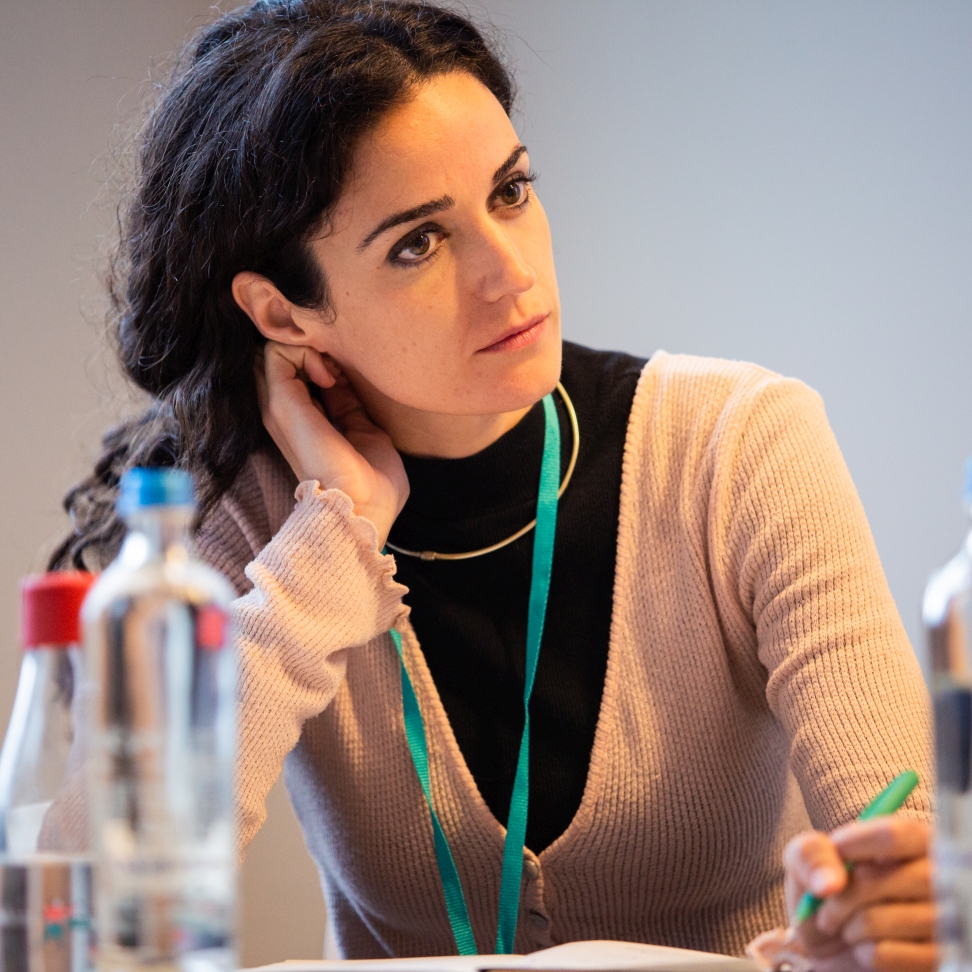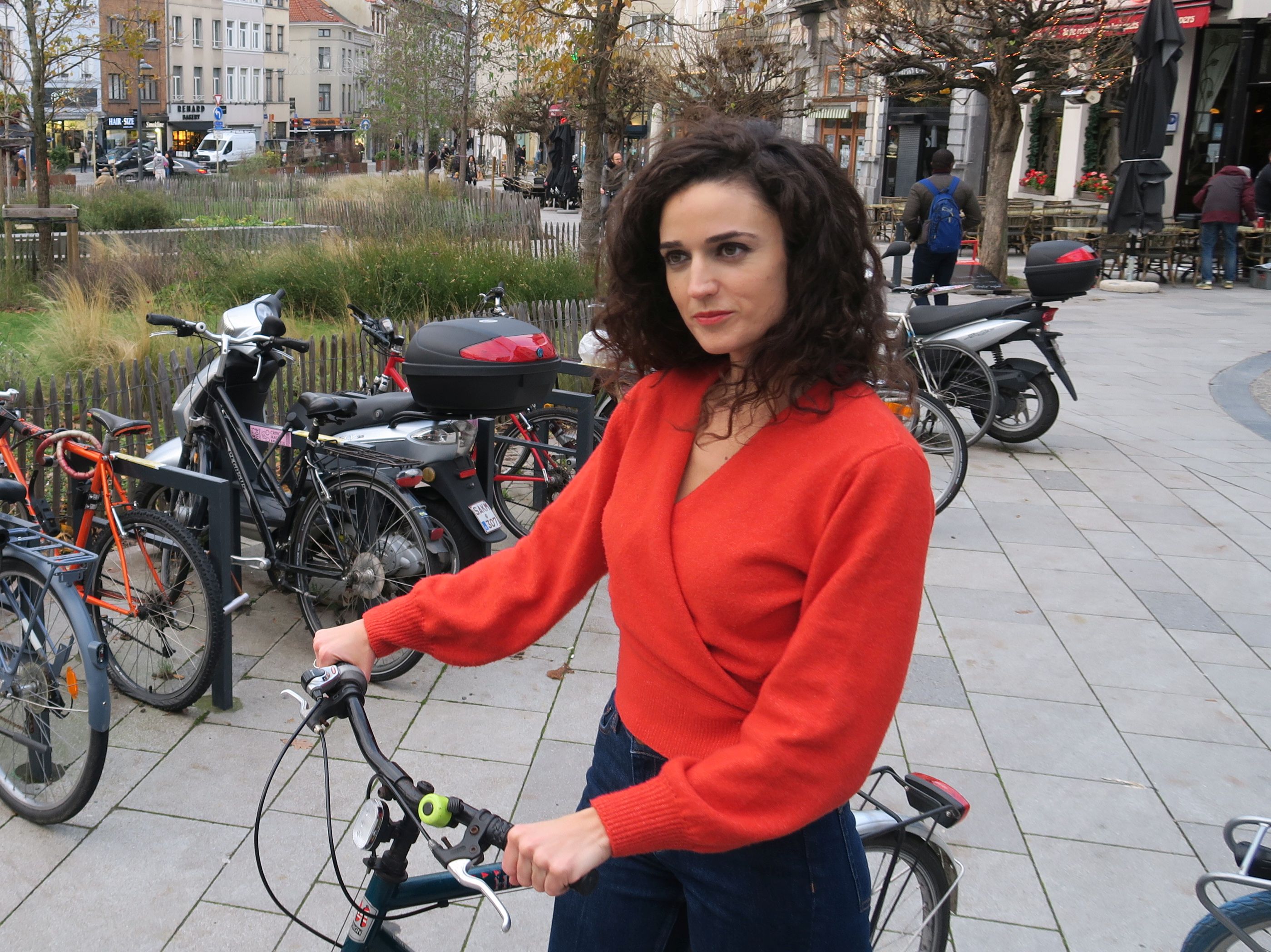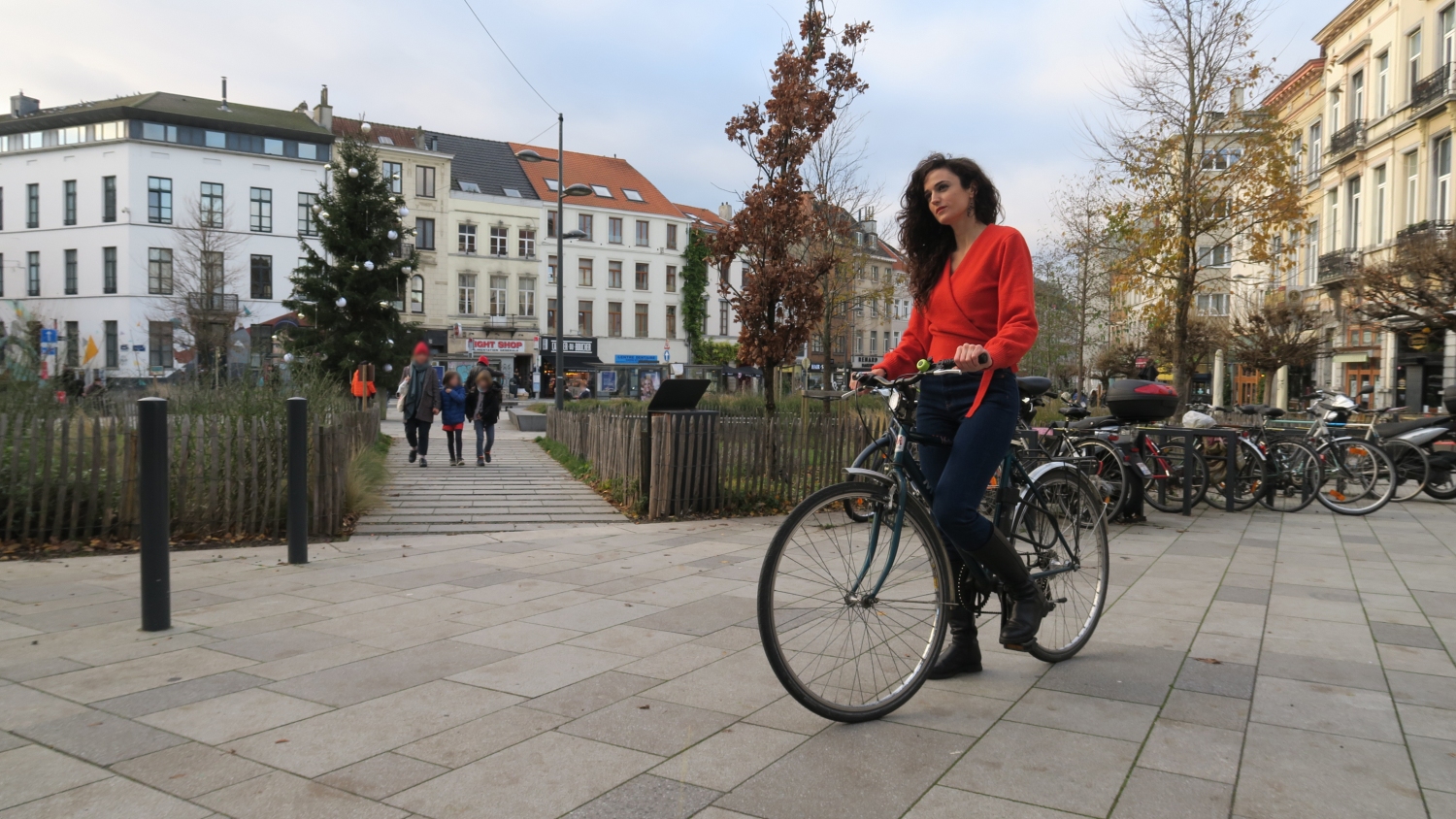Danube Cycle Plans - Interview with Maria José Rojo, POLIS
13-12-2021
With Maria José Rojo, a Project Manager – Coordinator for Active Travel and Health at POLIS, we have talked about ‘ideal cities’, the connection between active travel and health, the importance of cycling infrastructure and much more.
Two Danube Transnational Programme projects, the SABRINA and Danube Cycle Plans project (a few words about both projects are below), dealing with cycling have joined forces and prepared a series of interviews with people working in the mobility and transport field, with the focus on cycling. We have asked them about their opinion on different topics connected to more cycling, safer cycling infrastructure, promotion of cycling, etc. Visit the webpages of both projects to read the interviews which will be joined also in the capitalization newsletter published in December 2021 (subscribe HERE).
___________________________________________________________________________________________________________________________
 Maria José Rojo is a Project Manager – Coordinator for Active Travel and Health at POLIS, the leading network of European cities and regions working together to develop innovative technologies and policies for local transport.
Maria José Rojo is a Project Manager – Coordinator for Active Travel and Health at POLIS, the leading network of European cities and regions working together to develop innovative technologies and policies for local transport.
Maria José started working at POLIS in 2019. She is currently working on several European Union projects such as MOMENTUM (Modelling of emerging transport solutions), ReVeAL (Vehicle access regulation for improved livability) and SPROUT (Sustainable policy response to urban mobility transition). She focuses on the relation between mobility and health, with a focus on the active modes of transport: walking and cycling. Prior to joining POLIS, she worked as a researcher for the Polytechnic University of Madrid and New York University. Besides, she worked as an urban planner for the United Nations Human Settlements Programme (UN-Habitat) and several offices across Latin America and Spain.
Maria holds a PhD in sustainable urban planning, a postgraduate diploma in human settlements, and a master’s degree in urban planning and architecture from the Polytechnic University of Madrid, Spain. She is Spanish, living in Brussels, Belgium.
___________________________________________________________________________________________________________________________
Maria José, your background is in urban planning, human settlements, and architecture. How would your ideal city look like from the mobility perspective?
People living in this ‘ideal city’ can live their lives moving in a safe, sustainable, affordable and comfortable way. The city is diverse in uses, compact, and sufficiently dense. Citizens reach their daily activities (work, leisure, education, etc.) within a short walking and cycling distance, improving their health, and saving time and money spent in transport. Public spaces are accessible, inclusive, and enjoyable, enabling social interaction and access to green areas. Robust and efficient public transport is the backbone of a multimodal urban mobility ecosystem that allows citizens to access all the opportunities the city offers. In a city like this, designed for people and not cars, car ownership and use are very limited simply because it is not convenient.
For two weeks at the beginning of November 2021, the world leaders and decision-makers gathered in Glasgow at COP26. Cycling advocates wanted to encourage them to boost cycling levels around the world since more cycling can contribute to reducing carbon emissions. How would you encourage national, regional, and local authorities to invest more into cycling and other modes of active mobility?
To reach the objective set in the European Green Deal to achieve climate neutrality by 2050, the transport sector (currently responsible for 25% of GHG emissions, 75% of which is due to road transport) needs to be deeply transformed. The shift towards active travel plays a key role in this transformation. Investing in and promoting active travel whilst reducing private car ownership and use is instrumental to meet ‘net zero’ carbon targets, particularly in urban areas, while also reducing inequalities, increasing safety, optimizing public space usage, and improving public health and quality of urban life.
 In POLIS you are responsible for the area of Active Travel and Health. These two areas are closely connected. Why is it important to incorporate cycling and walking into health policies and vice versa?
In POLIS you are responsible for the area of Active Travel and Health. These two areas are closely connected. Why is it important to incorporate cycling and walking into health policies and vice versa?
Indeed, Active Travel and Health are closely interlinked. On one hand, increasing the levels of walking and cycling can reduce the levels of air and noise pollution. In Europe, 114,000 premature deaths could be prevented every year by meeting the new World Health Organization Air Quality Guidelines. Also, traffic noise leads to emotional and behavioural disorders. On the other hand, integrating active mobility as a daily means of transport makes it easier to achieve the target set by the WHO of 20 to 40 minutes of daily moderate physical activity needed to stay healthy and avoid the multiple health problems associated to sedentary lifestyles. Thus, by facilitating active travel, cities can relieve the burden on public health. Cities are realising this and creating synergies between health, mobility, and urban planning departments to achieve common objectives, for example, Rotterdam in the framework of its walking strategy ‘The Pedestrian on a Pedestal’.
Cyclists and pedestrians are amongst the most vulnerable road users. The numbers of seriously injured and killed in traffic is not decreasing as we would have hoped. What could cities and regions do better to protect them?
The principles of sound effective actions for traffic safety are compiled in the city declaration ‘New Paradigm for Safe City Streets’. The key to reduce traffic deaths and serious injuries of vulnerable (or valuable) road users in urban areas is to act on the source of danger, which is motorized traffic – and most of all: speed. At POLIS we believe this must be done first at a structural level by acting on vehicles and infrastructure (through reduced speed limits, traffic calming, and spatial interventions to regulate vehicle access). Currently, many cities in Europe are setting city-wide 30km/h speed limits (among them Brussels, Graz, Grenoble, Zurich) and implementing urban vehicle-access regulations. Enforcement and education can increase the effect of structural measures but cannot serve as an alternative.
We have experienced the shift towards active mobility in some cities with the Covid-19 pandemic. Many times, we can hear that people not cycling point out the main reason is inadequate infrastructure. Would you agree that good and especially safe infrastructure is pre-condition for more people cycling?
Yes, I fully agree. Pop-up bike lanes deployed during the lockdowns in cities across the world induced large and rapid increase in cycling, as studies confirmed. Non-existent or poor cycling infrastructure is one of the main deterrents that keeps people from cycling. Infrastructure has the capacity of fundamentally changing behaviour by shaping available safe options to move from A to B. As observed in many cities around Europe, when safe, connected, convenient, and comfortable cycling networks are in place, cycling levels rise. Thus, if cities want to grasp the multiple benefits that cycling can offer, it is instrumental to provide safe infrastructure.
In some cities, there is cycling infrastructure available in city centres. In other places, there are city centres lacking safe cycling infrastructure. Why is it important to connect urban and non-urban areas when it comes to cycling?
Providing cycling as an alternative for cars for suburban and interurban journeys could radically reduce congestion in and around cities, as people living in these areas are more prone to being dependant on private motorized vehicles. For example, within the cycle superhighway system in Nord-Rhein Westfalen (Germany), the route RS1 designed for day-to-day use removes a daily burden of 52,000 car journeys and reduces climate endangering CO2 emissions by 16,600 tons per year. We must also take into account the potential of e-bikes. In combination with the availability of high-quality cycling infrastructure, they can provide a real alternative for private motorized vehicles for longer distances. They also make cycling accessible to different groups (like older people) and in hilly areas.
One of the main goals of the Danube Cycle Plans project is to facilitate the development of cycling policies at the national and transnational levels supported by National Cycling Plans. At the same time, the responsibility of safe infrastructure for cyclists and pedestrians is often dedicated to local authorities. What should state authorities do to support municipalities and regions in sustainable mobility solutions?
National cycling strategies and plans can allow state authorities to set clear frameworks for the deployment of cycling in their countries. This sends the signal to cities and regions that cycling is important and must be considered in public policies.
There are different aspects that these frameworks can address, like the exchange of best practices, coordination of cycling policies (across vertical and horizontal authorities), capacity building activities, the co-funding of investments into cycling infrastructure, communication and awareness-raising campaigns and research. National cycling strategies can also allow deciding new legislative and fiscal frameworks that can be adopted at the national level to promote cycling. All of this can facilitate the deployment of sustainable mobility solutions at the local level.
 Are you a cyclist yourself? If yes, do you use your bicycle rather for commuting or for leisure purposes? Have you had any bad experiences with poor or unsafe infrastructure whilst cycling and what was it? What would your recommendation be for better safety of cyclists, what are the main improvements needed in your opinion?
Are you a cyclist yourself? If yes, do you use your bicycle rather for commuting or for leisure purposes? Have you had any bad experiences with poor or unsafe infrastructure whilst cycling and what was it? What would your recommendation be for better safety of cyclists, what are the main improvements needed in your opinion?
Yes, I am a cyclist, and use my bicycle both in my daily life for commuting purposes as well as for leisure, as I enjoy cycling trips. I am very concerned by the risks posed to pedestrians and cyclists in still car-centric and car-dominated cities. As a cyclist currently based in Brussels, I have had negative experience due to the problem of cars speeding in smaller urban streets. I have also witnessed and enjoyed the improvements in cycling infrastructure deployed as a result of the pandemic, so I stay positive.
What is your first association to the word bicycle?
In only one word? ‘Essential’ in both meanings: the bicycle grasps perfectly the ‘essence’ of mobility as the most efficient mode of transport; and it is an essential tool in the transition towards climate-resilient cities.
________________________________________________
Photo 1: Maria José Rojo at European Week of Cities and Regions, 2019 (personal archive)
Photo 2 & 3: Maria José with her bicycle in Brussels, 2021 (photo: Gonzalo Sánchez García)
_______________________________________________
A few words about both projects:
- SABRINA project focuses on road infrastructure safety for cyclists as one of the most vulnerable road users. It tackles cycling infrastructure safety issues on existing, planned, and missing cycling corridors crossing nine countries in the Danube region. The main goal is to help decision-makers plan, design, and implement safe and sustainable solutions for improved cycling infrastructure in the region. More at the project’s webpage, Twitter or Facebook account.
- Danube Cycle Plans project aims to implement a Pan-European Master Plan for Cycling Promotion. Project activities include the development of National Cycling Plans based on a common transnational Danube Cycling Strategy, defining a Danube cycle route network, infrastructure standards and adequate financial support and increasing the awareness of relevant stakeholders for the needs of cyclists. More at the project’s webpage.
